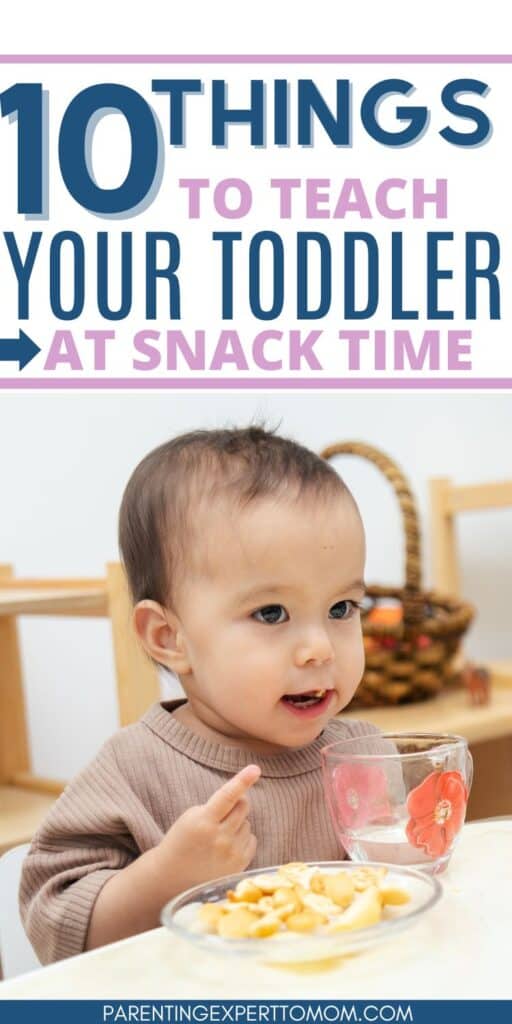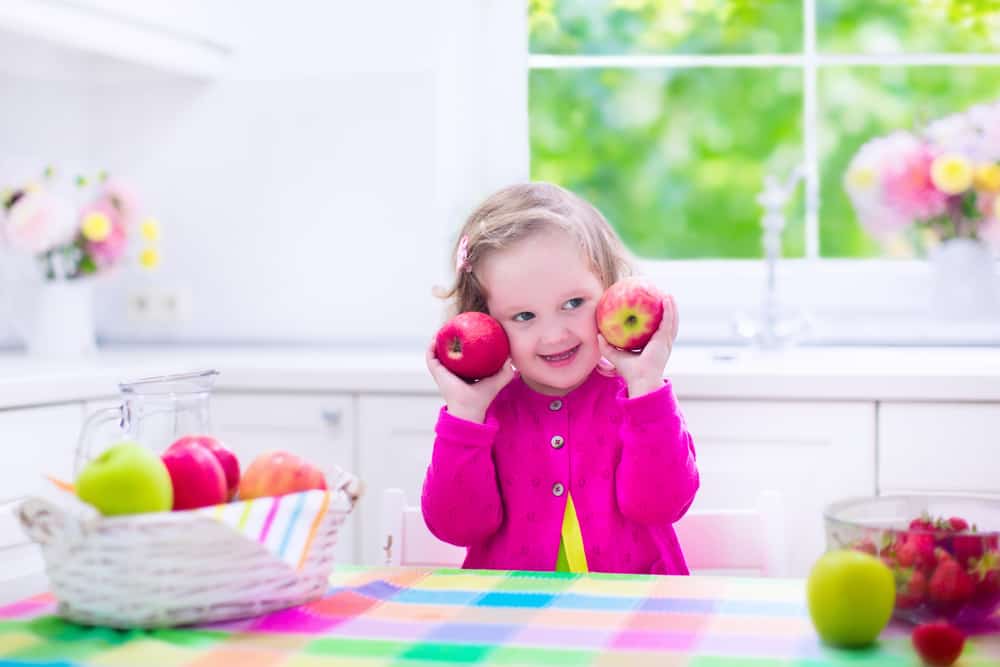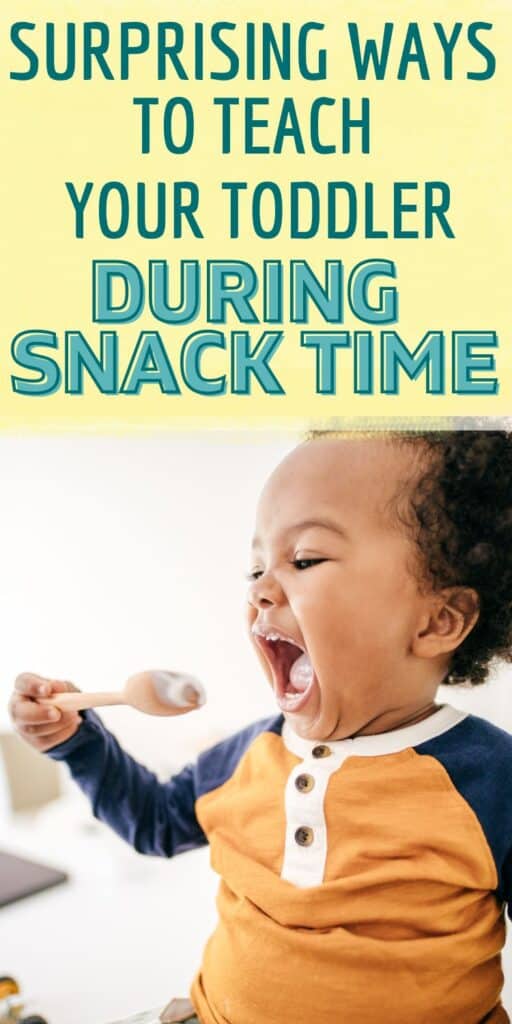Snack time with toddlers is more than just handing them a treat to curb hunger.
It’s an opportune moment to incorporate various teaching experiences without your little one even realizing they’re learning.
Whether it’s shaping their color recognition with berries or enhancing their language skills while choosing between pretzels and crackers, snack time can be packed with educational potential.
Here’s how you can fuse learning into these delightful moments.

(This post may contain affiliate links. To read our full disclosure policy click here.)
1. Offer Choices to Encourage Language Development
Double the snack, double the learning – Present your toddler with choices like, “Do you want an apple or a banana?”
This not only allows them to express their preference but also starts them on the path to forming complete sentences and understanding the world of decision-making.
Always honor wherever your toddler is as far as communication goes.
If they do not have words to express which item they want, look for them to point, vocalize, or even just look at their preferred choice.
2. Involve Your Toddler in Preparation
Stir in some independence – Let them help prepare their snack.
This could mean having them help you bring ingredients to the table, wash an apple, or stir some fruit into their yogurt.
This not only lets them get interested in what they are about to eat but also work on things like fine motor and listening skills.

3. Teach Preacademics During Snack Time
Snatching snacks while learning – Integrate pre-academic concepts even as you dish up the snack.
Use multi-colored food items to teach colors, count pieces of fruit, or sort snacks into shapes.
Flex those cognitive muscles in a fun and meaningful way!
Have realistic expectations, and just have fun introducing the concepts to your little one.
4. Sit Down and Eat Together
More than just a meal – When you share snack time with your toddler, you create an emotional connection.
It’s an ideal setting to work on table manners, patience, and social skills. Besides, toddlers often model behaviors, so they’ll be observing and learning much more than you think.
5. Making Clean-Up Time a Game
The snack’s not over till the area’s spick and span – Encourage your toddler to tidy up by turning it into a game.
Sing a cleaning-up song or have them help wipe down their tray with a wet washcloth to work on fine motor skills and have some sensory play.
6. Sensory Exploration Through Snacks
Feel, taste, listen – Snack time is sensory time.
Use it to explore different textures, tastes, and smells.
Converse about the softness of a peach or the crunch of a cracker.
These experiences are invaluable in early childhood development.

7. Storytelling with Snacks
Once upon a munch – Hold impromptu story sessions related to the snack at hand.
The pea that rolled off the plate could have an entire adventure.
Storytelling is a great way to nurture imagination and language development.
8. Recognize Shapes with Snack Items
The geometry of snack time – Foods come in all sorts of shapes and presenting square cheese or round biscuits can turn into an engaging lesson on shapes.
Make shapes with snacks or find them in the room.
9. Develop Fine Motor Skills
Snack stack – Use snacks to stack and sort, like making a tower of Cheerios.
Not only is it fun, but it’s also a sneaky way to work on those fine motor skills that are so crucial for future writing and dexterity.
10. Stimulate Creativity in Presentation
Snack art – Get creative with the way snacks are presented.
This has been one of my kiddos favorite things to do!
Create a happy face with raisins on peanut butter or form shapes with carrot sticks.
These artistic moments not only encourage creativity but also make snacks more appealing to toddlers.
Have Fun and Learn Lots with Snacks!
In summary, toddlers absorb knowledge like sponges, and incorporating learning into daily routines like snack time can be highly effective and enjoyable for both of you.
Remember, every meal is an opportunity for education and bonding.
Seize snack time as a canvas for teaching, and watch your little one flourish in more ways than one.
You can find more opportunities to teach your little one all day long HERE.
Related Posts You Will Enjoy
Toddler Screentime: How to Create a Family Plan
How to Balance Your To-Do List and Your Toddler
How to Have a Stress-Free Bedtime Routine


Kayla O’Neill has a master’s degree in education as well as a bachelor’s degree in special education with an emphasis in early childhood education. She has been working as a developmental therapist with babies and toddlers in early intervention since 2012. She is also a mom with two young children.